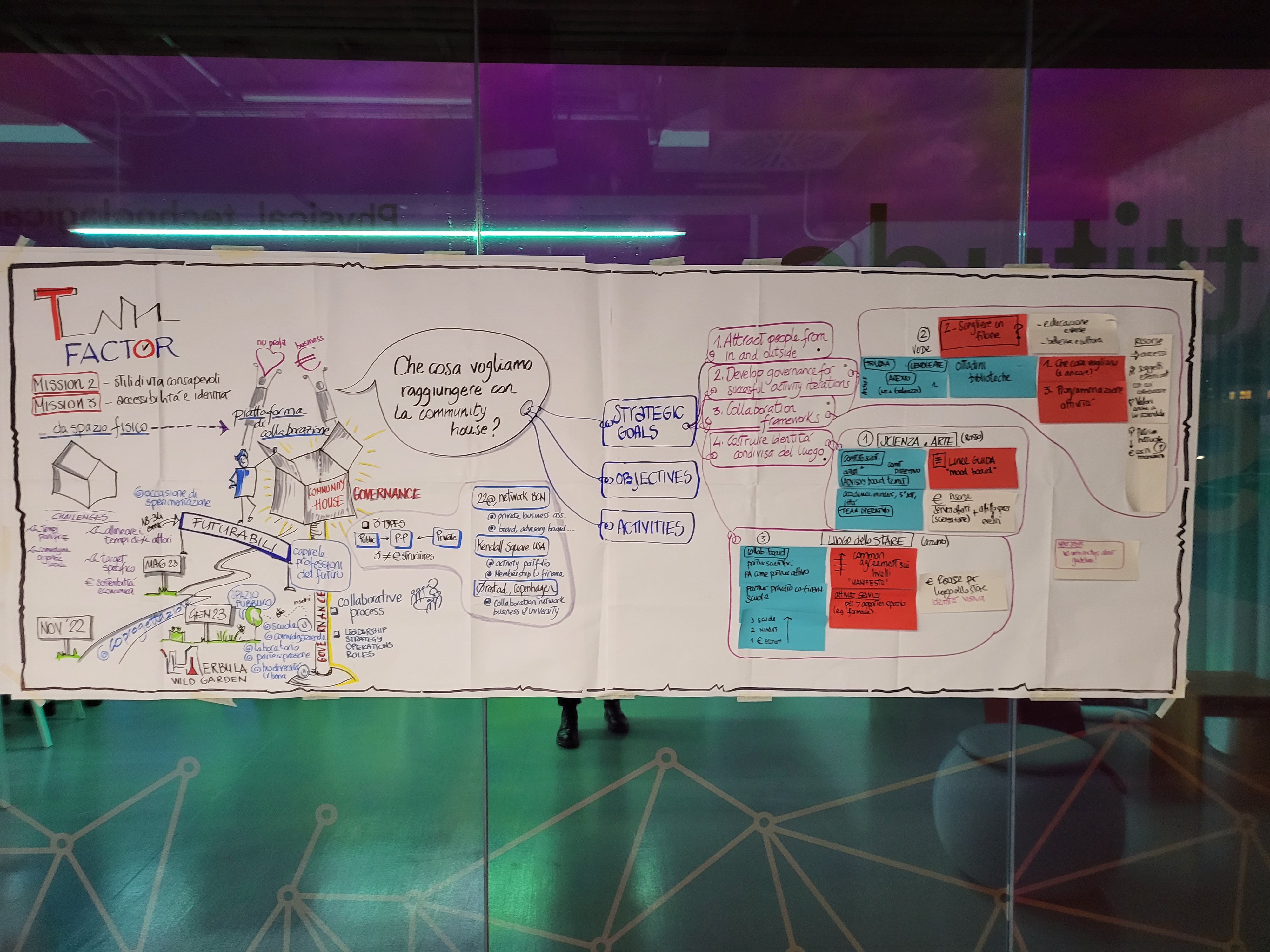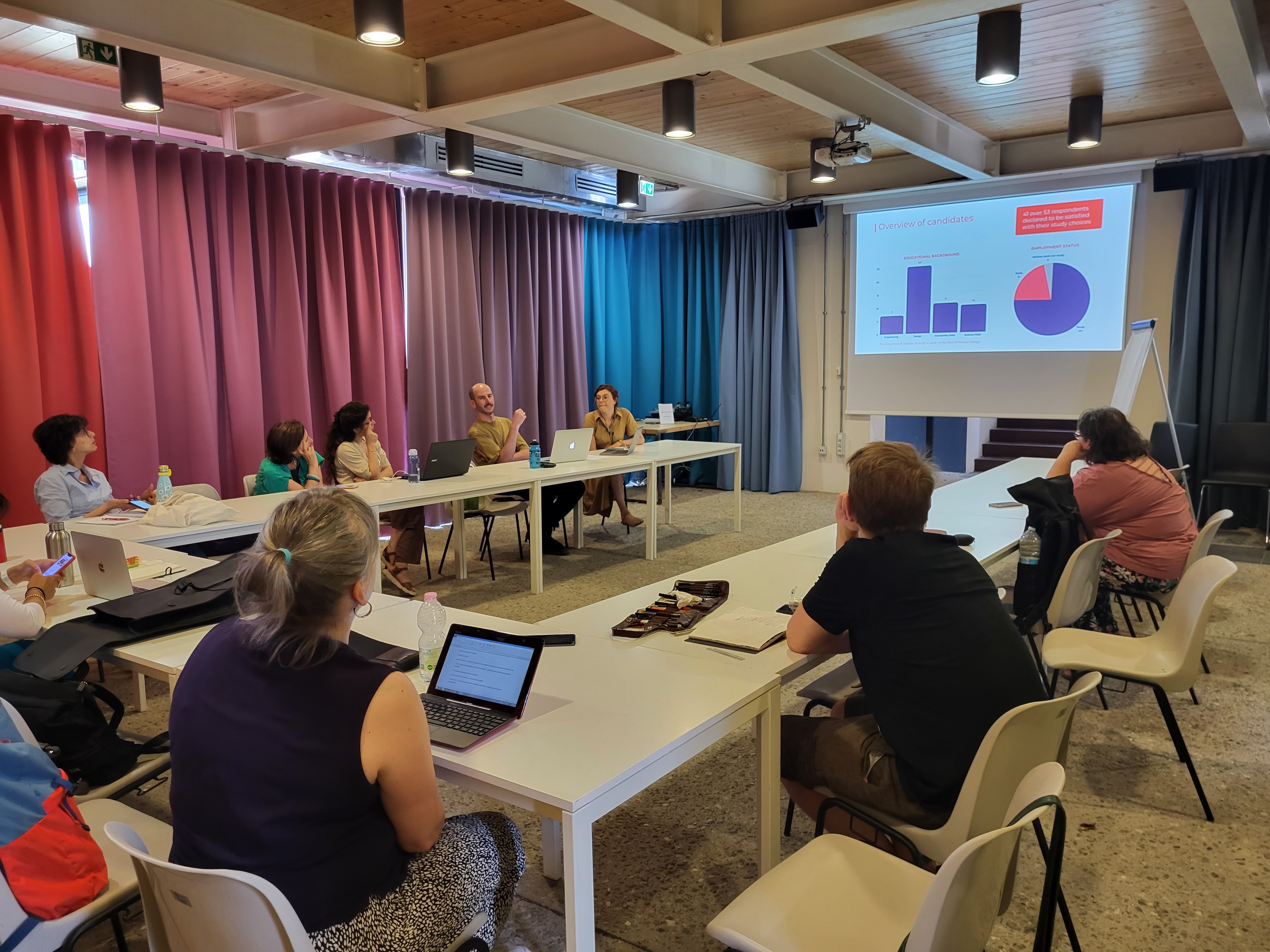In a context where things are temporary, how does one capture legacy? As we’ve come to learn in the T-Factor project, it’s all about how to keep the ball rolling. Temporary uses have been the order of the day at T-Factor for the past three years, with pilots across Europe experimenting with prototypes happening in the meantime of their urban regeneration. But now, with ample experiences in the bag, the question begins to shift from how to launch to how to scale and preserve. This was the challenge our colleagues at MIND launched for us, in the Social Innovation and Social Inclusion lab.
One of the missions of Milan's pilot throughout T-Factor was the enhancement of social inclusion and the connection of people in, across, and outside of MIND. Their mission to create more social cohesion took shape in the prototype of the Community House, a concept that is able to activate the local community of MINDers, create a notion of togetherness, and develop a portfolio of activities to engage the local and external community.
The idea of establishing a touchpoint space or organization for the people at MIND was ambitious. Local project partners prototyped it with cycles of collaboration between the companies and organizations already established in the innovation district, which resulted in a program of continuous education in STEM for youths (Futurabili), and several environmental education interventions for audiences that ranged from schoolchildren to workers in the companies at MIND (Herbula Garden).
This is where T-Lab 6 joined to help them tackle the challenge of translating all they had learned about their collaboration dynamics into a conversation about governance. More precisely we worked together towards a collaborative governance model that local stakeholders could adopt and develop in the future for the establishment of their Community House concept.
We visited the site to speak with the people that had been part of the collaboration prototypes to listen what they had to say about their experience and collect impressions about what they wanted to see for the future of the Community House.
The intentions were clear: Companies and organizations that had taken part in these activities were eager to explore more channels of collaboration, and even create new iterations of these activities.
But there’s a catch. Who’s steering the ship?
The main challenge was to help these stakeholders navigate their experience wearing ‘future-proof’ glasses. Plainly, helping them think about how what they learned from the process could be restructured to think about a governance model to steer the Community House toward the interests and goals they saw for it.
As a response, T-Lab 6 supported our partners at MIND with the development of a workshop method we called ‘MINDmap’. MINDmap is a method that is meant to make complex things simple. We devised it as a workshop where participants can engage with governance in a way that strips it out of its difficult conversation starters.
The method is simple. We took the concept of collaborative governance and boiled it down to its four most basic parts, its building blocks. Then, we devised a workshop process that could speak to these building blocks in a way that addresses MIND’s priorities head-on. Even though the method is originally meant to answer one of MIND’s questions, it is completely applicable to other contexts. Having simplified a concept as complex as collaborative governance to straightforward, need-to-know terms means that anyone with a need to engage in such a conversation can use this tool as a first stepping stone.
Our partners at Milan utilized an adapted version of this method to integrate it as part of their event in the T-Factor Roadshow Series. They engaged possible future partners in the Community House to ratify its goals and visualize the next steps toward the consolidation of their governance model.
We have compiled the method and the highlights of the experience in Milan in a facilitator’s booklet to facilitate the spread and development of collaborative governance.
IN A NUTSHELL
- The T-Lab of Social Innovation and Social Inclusion collaborated with T-Factor’s partners at MIND to produce a workshop method to engage with collaborative governance.
- The method’s objective is to simplify what can otherwise be complex conversations. It does so by framing collaborative governance under its most basic ‘building blocks’.
- By lowering complexity, this workshop method also becomes applicable in other contexts. The tool paired with it, the MINDmap booklet, details the content and the process to do so.
- The method was adapted by the partners at MIND to utilize in one of their workshops in the Milan T-Factor Roadshow.
- The workshop attendees were able to identify where the maximum potential for the Community House is, along with what are the initial roadblocks, opportunities and immediate steps they need to take to continue consolidating the Community House.

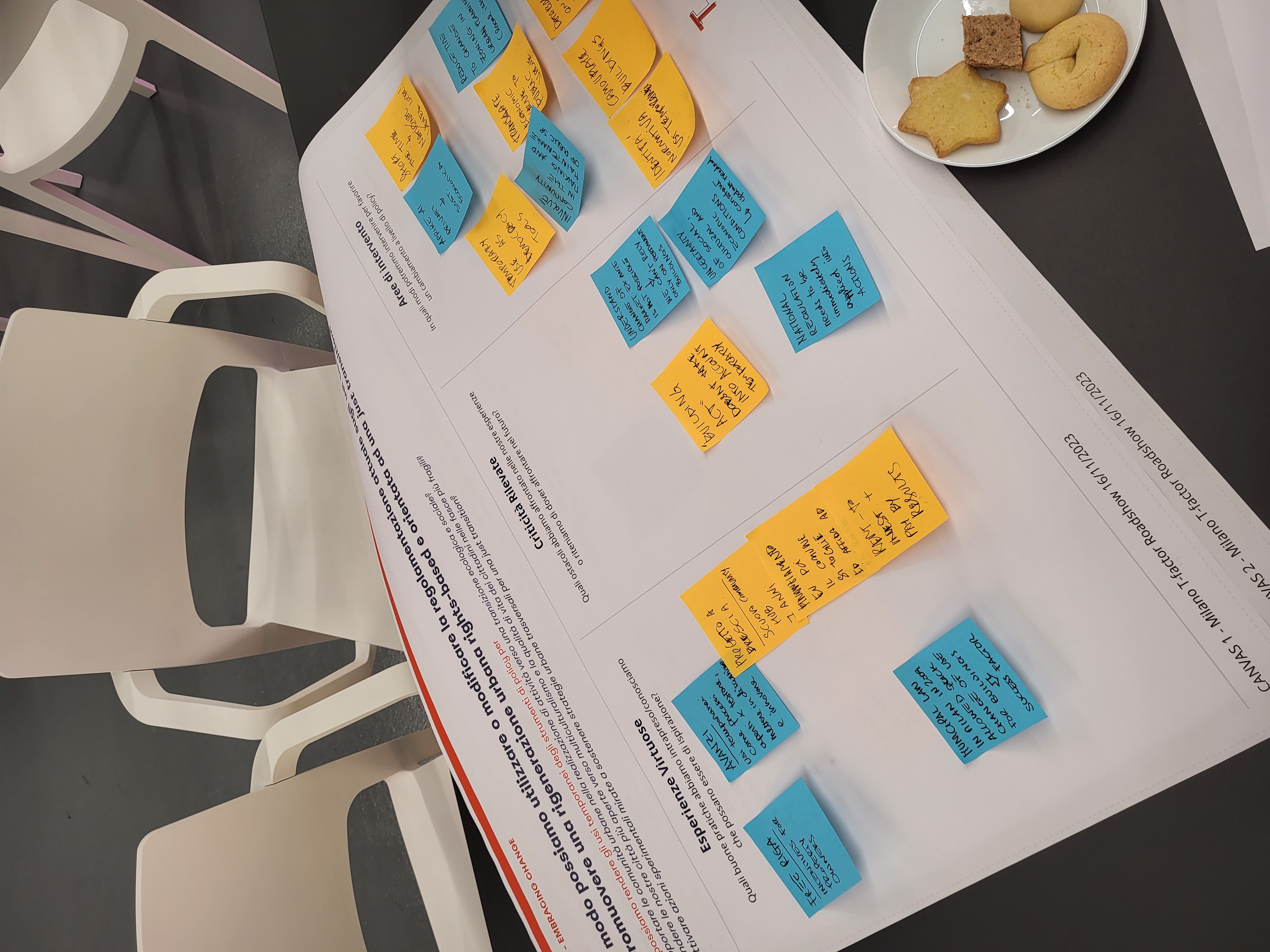

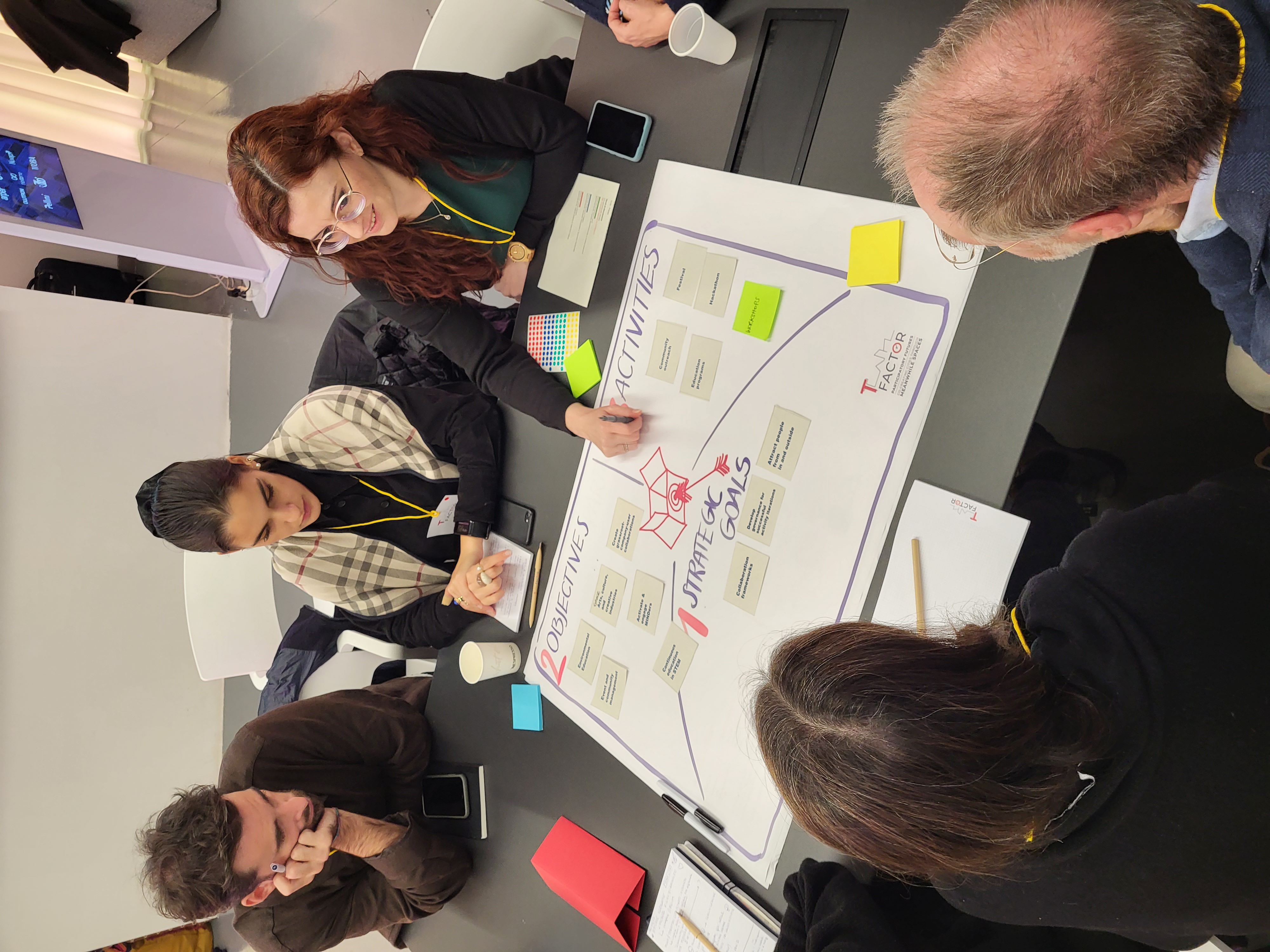

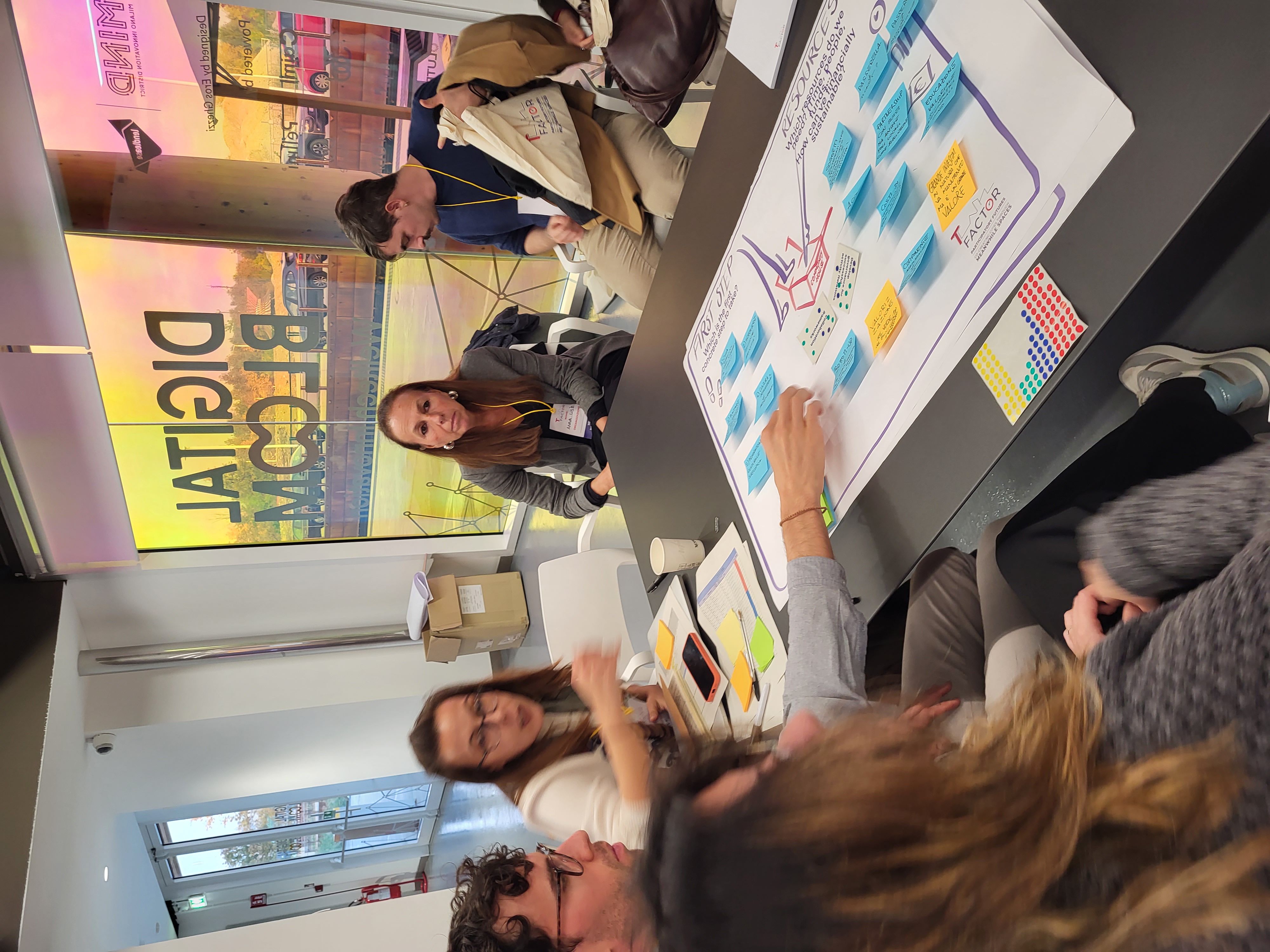
MINDmap
An ideation methodology for collaborative governance models based on the case study of Milano Innovation District
